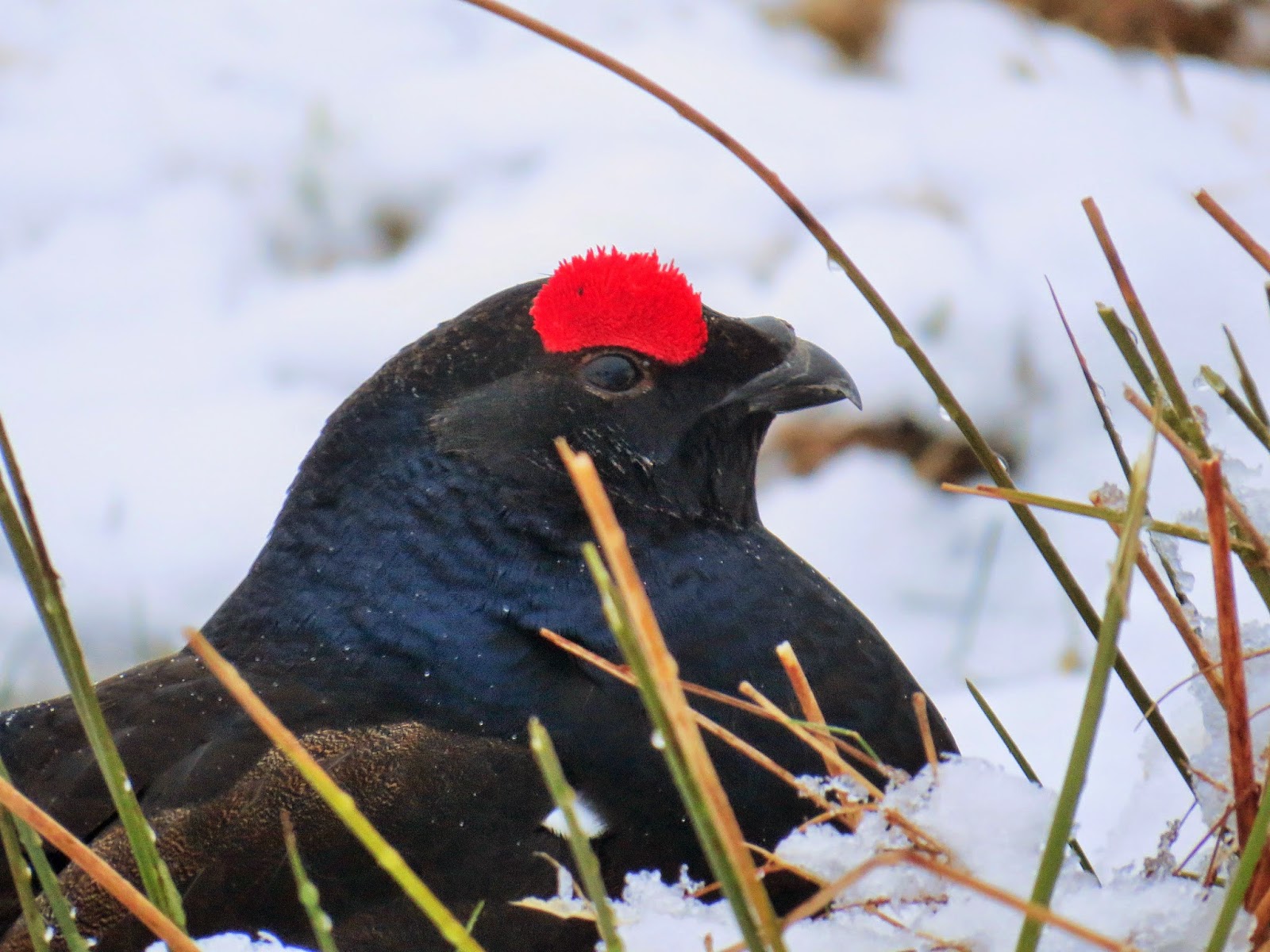Black Grouse, Glen Livet
There were also about five Snipe lekking as well, along with mating Curlews and Lapwings calling from everywhere.
Finally, at nine o'clock, the final Grouse flew off and we were able to get out of our freezing tents and enjoy a very welcome cup of tea. We headed back to our car, and then on to the Findhorn Valley, where we hoped to find some of the Highland's special raptors.
On the way, we tried Lochindorb again, but once more to no avail, though a pair of Merlin were seen, along with more Buzzards, Red Grouse, Greylag Geese and the large Common Gull breeding colony. I also spotted three Whooper Swans in a roadside field near Boat of Garten, which was only my second-ever sighting of the species.
Soon after entering the valley, we began to encounter our first birds of prey, with Buzzards and Kestrels being very common. I also found my first three Crossbills of the trip. The situation of Crossbills in Scotland is a very complex one, to put it mildly. Previously, weak-billed birds were assumed to be Common Crossbills and chunkier-billed ones as Scottish Crossbills, supposedly Britain's only endemic bird species. Then, it was discovered that some of the chunky-billed birds were in fact Parrot Crossbills and that actually this species was rather common in the Highlands. The Scottish Crossbill seemingly covers birds that are intermediate between the two, but there is some overlap, meaning that it is impossible to identify it by sight alone. A sonogram of the bird's call would be required, though it seems that there is again some overlap and that bird's call differentiate between regions anyway- much the same as human's accents and languages. Anyway, currently, most authorities treat the Crossbill family as containing fives species, three of which (Common, Parrot and Scottish) breed in the Highlands.
The bird I saw was undoubtedly a Common, identified from Parrot by its comparatively thin bill and from Scottish by the fact that it was in a Norwegian Spruce Tree, somewhere a Scottish would not be found.
I can be fairly certain that this is a Common Crossbill!
Further down in the valley, I found a Dipper flying fast up the Findhorn River, while Lapwings, Curlews and Common Gulls were ubiqitous. A Sparrowhawk flew overhead, as did a number of Ravens. We reached the end of the valley, and very kindly a local bird guide put us on to a pair of Golden Eagles. They were extremely distant and would only show briefly as they hunted the mountain faces. This was my first sighting of the species in Britain, and although the views were not entirely satisfactory (to put it mildly!), I was really pleased.
Common Gull, Findhorn Valley
After a prolonged time with no Eagle sightings, we headed back out of the valley. A stop along the way brought fantastic views of a male Merlin hunting, along with another Crossbill (presumably Common) that flew overhead and a large number of woodland birds, including Treecreeper, Goldcrest and Siskin,
We decided to check the flooded fields near Boat of Garten, which regularly hold breeding Slavonian Grebes, though we had no luck in finding any, with just a Little Grebe, two Redshanks and numerous Wigeon, Teal, Mallard and Tufted Ducks seen.












.JPG)

No comments:
Post a Comment